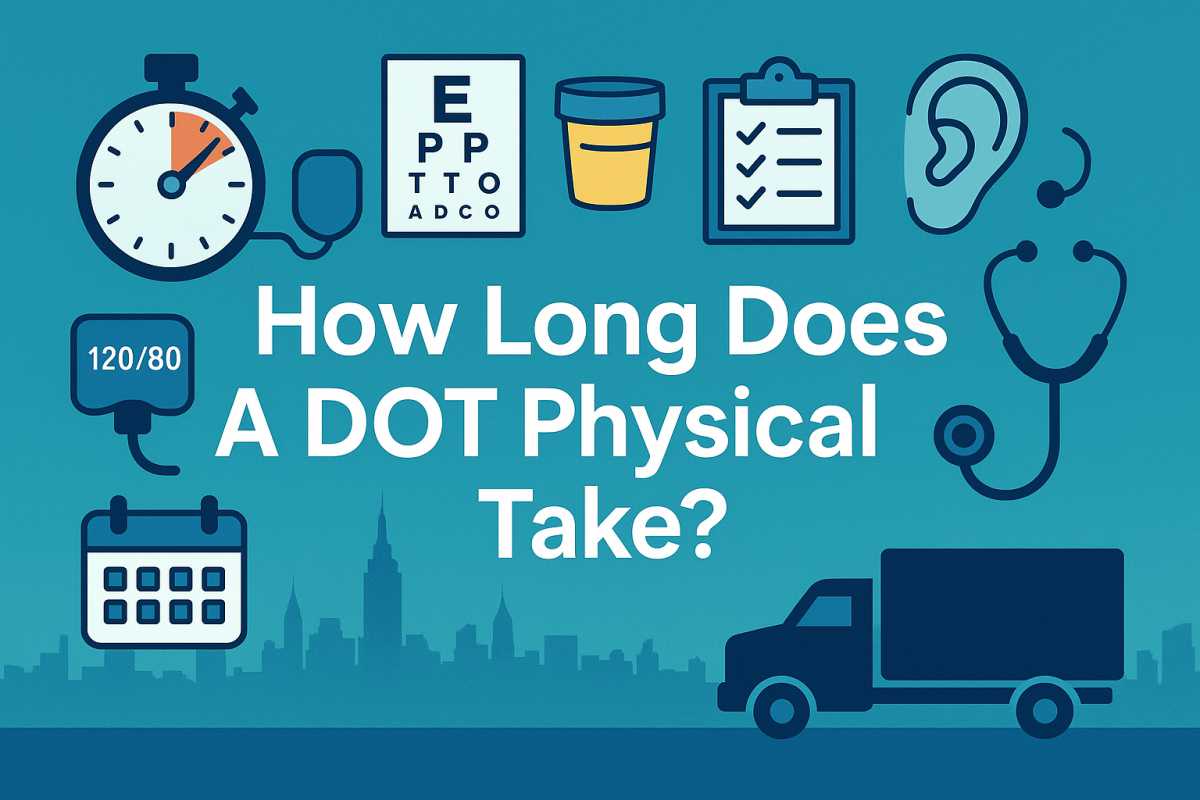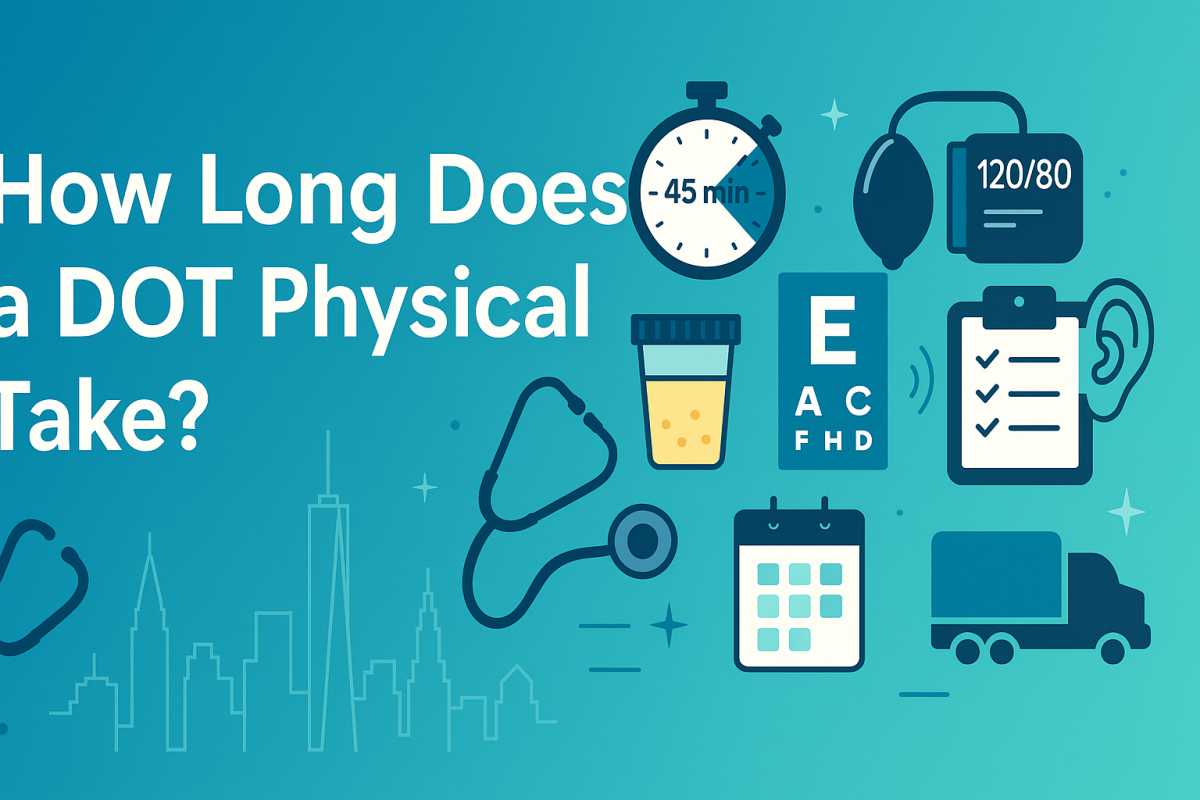If you’re a commercial driver —or on your way to becoming one—you’ll eventually face the big scheduling question: How long does a DOT physical take? In most clinics, the appointment runs about 30–45 minutes from check-in to checkout. Plan for up to an hour if the office is busy or you have a medical condition that needs extra documentation. That’s the short answer. The fuller picture below will save you time, prevent repeat visits, and calm those pre-exam jitters.
What Happens During A DOT Physical?
A DOT physical is a focused safety check to confirm you’re medically fit to operate a commercial motor vehicle. After quick paperwork about your medical history and current medications, the examiner typically measures vital signs (blood pressure, pulse, height, weight), checks vision and hearing, and completes a head-to-toe exam (heart, lungs, abdomen, neurological and musculoskeletal systems). You’ll also provide a urine sample—not for drugs by default, but to screen health markers like glucose or protein. If your employer ordered a drug screen as well, that’s run as a separate test.
At the end, if you meet the standards, you receive a Medical Examiner’s Certificate. Many drivers get the full 24-month card; some receive a shorter term if a condition (often blood pressure) needs monitoring.
What Can Make The Appointment Longer?
Borderline Blood Pressure: If your reading is high, the examiner may repeat measurements after a short rest. Elevated readings can also shorten the certification period, which the clinician will explain.
Vision Or Hearing Adjustments: Wearing your glasses, contacts, or hearing aids? Bring them. If your equipment isn’t working properly, expect delays while the office finds a workaround—or you return with the correct gear.
Missing Paperwork: Conditions like sleep apnea, diabetes, heart disease, seizures, or ADHD generally require letters from your treating clinician, recent test results, or compliance reports (e.g., CPAP data). Not having them on hand is the #1 reason people need a second visit.
Clinic Flow: Time of day matters. Lunch hour and late afternoon tend to be busiest. Early appointments often move faster.

How To Prepare (And Keep It To 30–45 Minutes)
Sleep Well, Hydrate, Don’t Overdo Caffeine Or Nicotine. Both can spike your blood pressure.
Bring Your Essentials: Government ID, medication list (dose & frequency), glasses/contacts, hearing aids, and any specialist notes or test results.
Take Prescribed Medications As Usual. Skipping doses to “pass” can backfire.
Know Your History: Past surgeries, diagnoses, and hospitalizations—having dates handy speeds up the form.
Related Article: Drive Reduction Theory
Common Questions Drivers Ask
Does A DOT Physical Include A Drug Test?
Not automatically. The in-office urine dip is for health screening. Drug testing is ordered by the employer (pre-employment, random, post-accident, etc.) and follows separate procedures.
What Blood Pressure Do I Need?
Normal readings usually qualify for a two-year certificate. Mild elevations often lead to a shorter card (e.g., one year) and a plan to manage numbers. Markedly high readings can mean a temporary disqualification until controlled.
Can I Pass With Glasses Or Hearing Aids?
Yes—standards are based on your corrected vision and hearing. If you need corrective devices, you must use them during testing and when driving.
Do I Need To Fast?
No. Eat normally, but avoid heavy salt, energy drinks, and mega-caffeine right before your appointment.
How Quickly Will I Get Results?
Most drivers walk out with a decision the same day. If the examiner is waiting on documentation or labs, you’ll be told exactly what’s missing and how to submit it.
How Long Is The Card Valid?
Up to 24 months if you meet all standards; shorter durations are common when a condition requires follow-up (for example, blood pressure monitoring).
What If I Don’t Pass On The First Try?
Ask precisely what needs to change—medication adjustment, new glasses, CPAP compliance data—and how soon you can retest. Many disqualifications are temporary and fixable.
Bottom Line
Book a one-hour window in your day, arrive prepared, and the actual exam portion will typically take 30–45 minutes. Bringing the right documents, wearing your corrective devices, and managing blood pressure ahead of time are the fastest ways to earn your medical card on the first visit—no surprises, no second trip.
